E-Bikes are Game-Changers
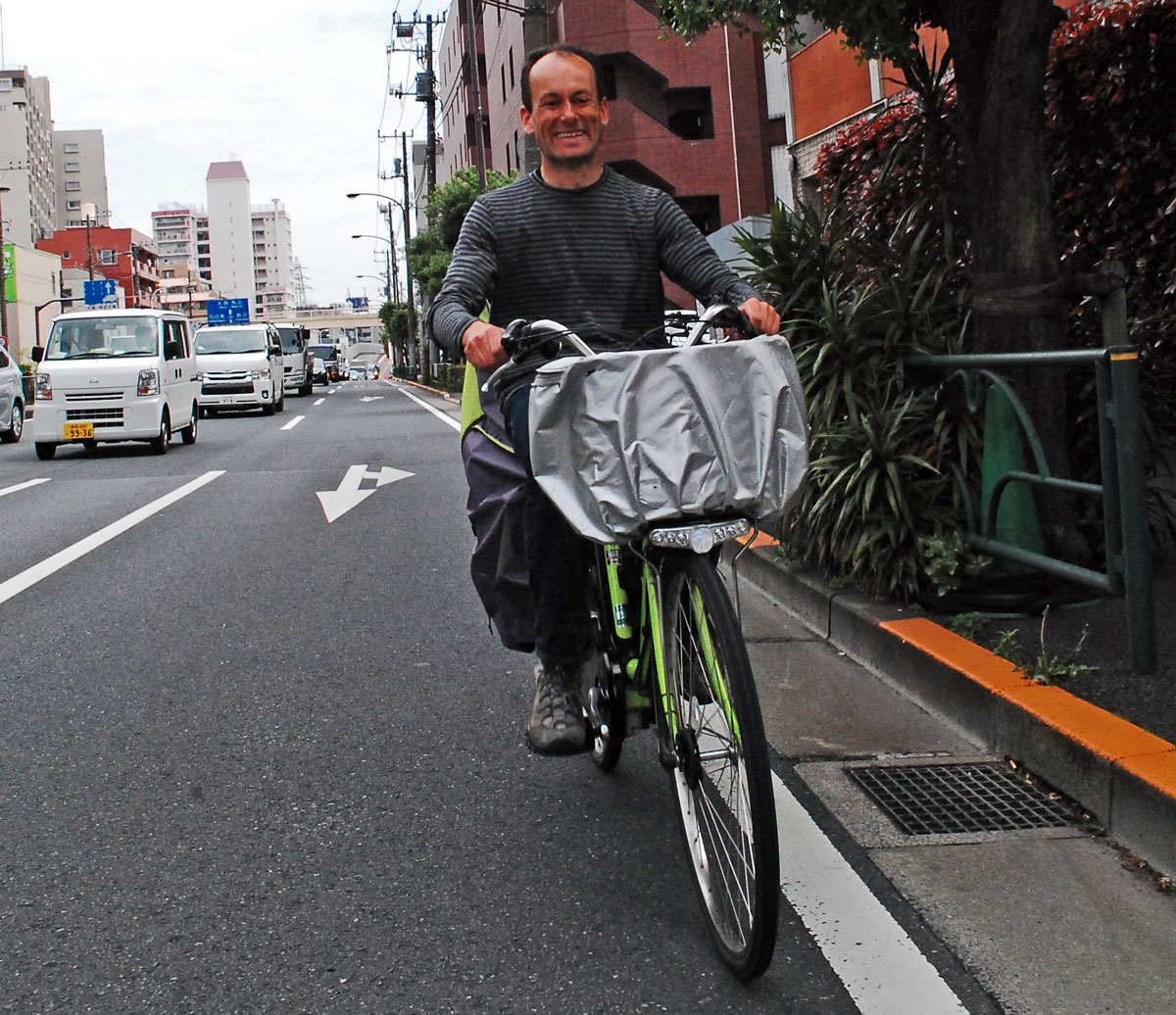
“This is the future. It will change everything!” said Koichiro Nakamura as he pointed to a bright green women’s bike in front of his office. We had met to discuss cycling and the media in Japan… and this bike wasn’t what I expected.
After I got over my initial surprise, I remembered riding through Tokyo last year on the way to TOEI, the great constructeurs of classic cyclotouring bikes. As we approached a narrow underpass, a woman on a similar city bike passed us and cut in front of Hahn in a maneuver that would not have been out of place in a cyclocross race. She took the “holeshot” and accelerated away. Nothing about her bike or her appearance suggested a competitive nature… but she had an electric motor that greatly enhanced her power output.
Then we saw them everywhere. Women (mostly, Japan still being a society with somewhat rigid gender roles, at least on the surface) who carried not just one, but often two children on seats attached on the front and back of their bikes. Mothers and children were well-dressed as Tokyoites tend to do and most definitely not working up a sweat, yet moving at a rather brisk pace.
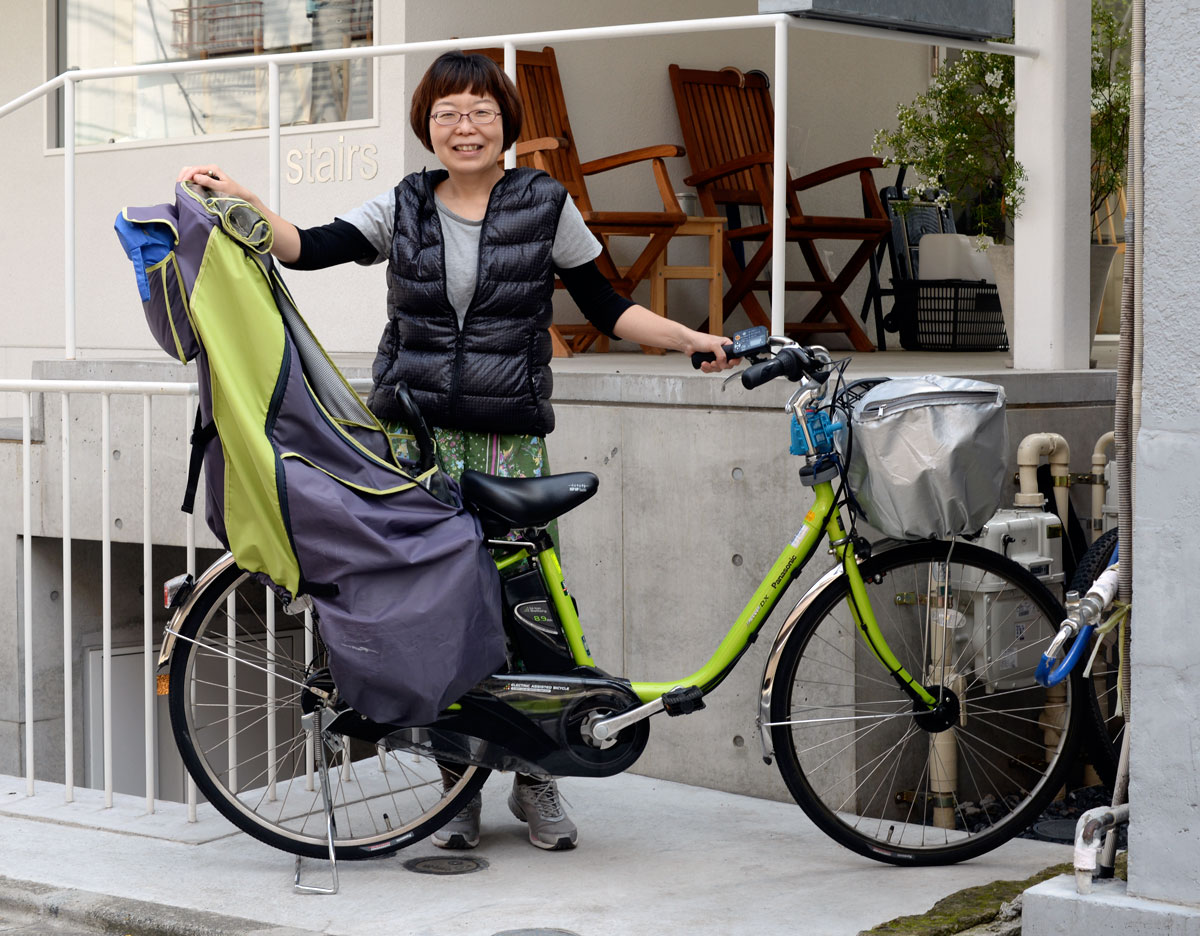
“Do you want to try it?” Koichiro interrupted my reminiscences. Of course I did. The bike belonged to Kaori Inoue, who shares Koichiro’s office space. She was happy to loan her bike and show us its special features. She was especially fond of the kick-stand, which also locked the headset. With the kickstand down, the headset indexed. You could still turn the handlebars against the ratcheting indexing, but they would not turn on their own. This greatly facilitated loading the bike. The kickstand itself was a huge centerstand that kept the bike upright, again to facilitate loading. The last thing you want is your bike falling over with your child on board as you load the basket in the front. There also was a sophisticated child seat with integrated rain cover. These bikes may not be intended for enthusiasts, but they are quite sophisticated.
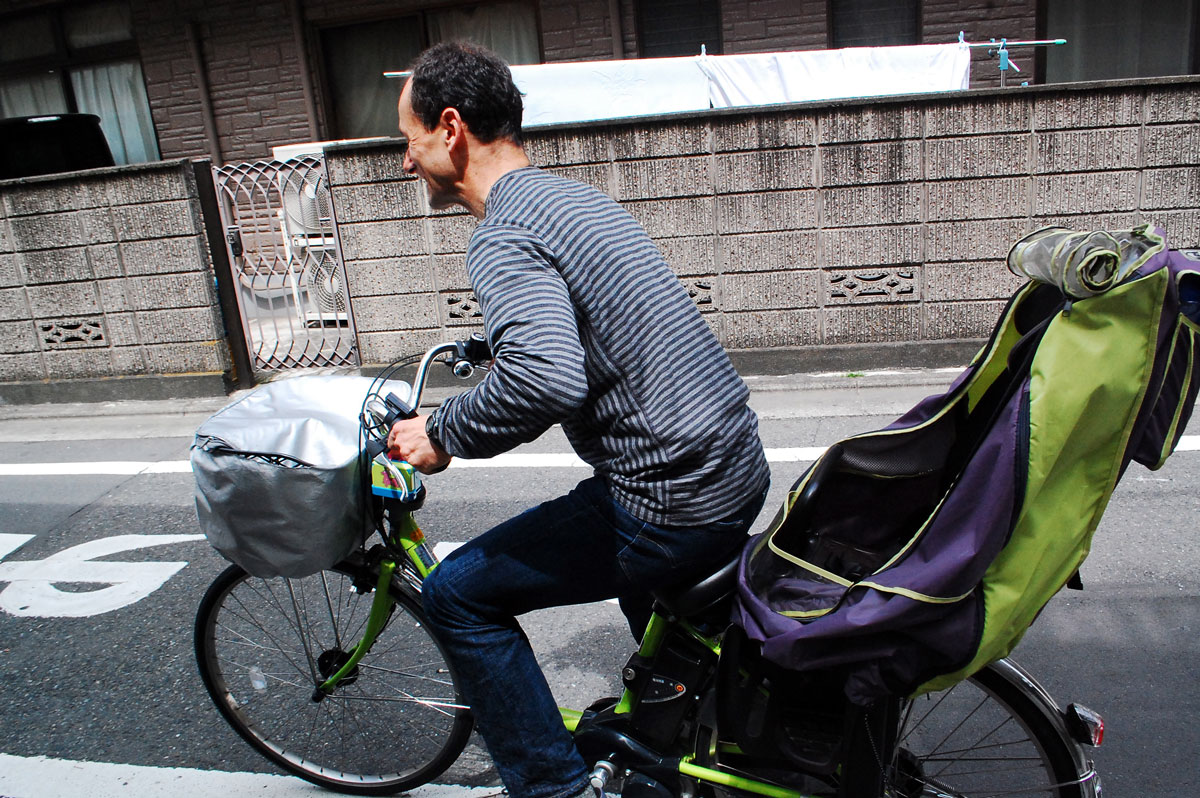
And so I got to ride an e-bike around Tokyo for a few hours! I was surprised how efficiently I could move with traffic. I especially liked the boost when accelerating from a light. Stopping no longer was an energy-sapper like it is on a normal bike.
I realized that e-bikes allow non-cyclists to use bikes efficiently. What would be a real workout even for a fit cyclist becomes more akin to a stroll with an e-bike. You still get some exercise, you still pollute much less, and you should have fewer problems parking at your destination. It’s a win-win-win situation. No wonder these bikes are so popular!
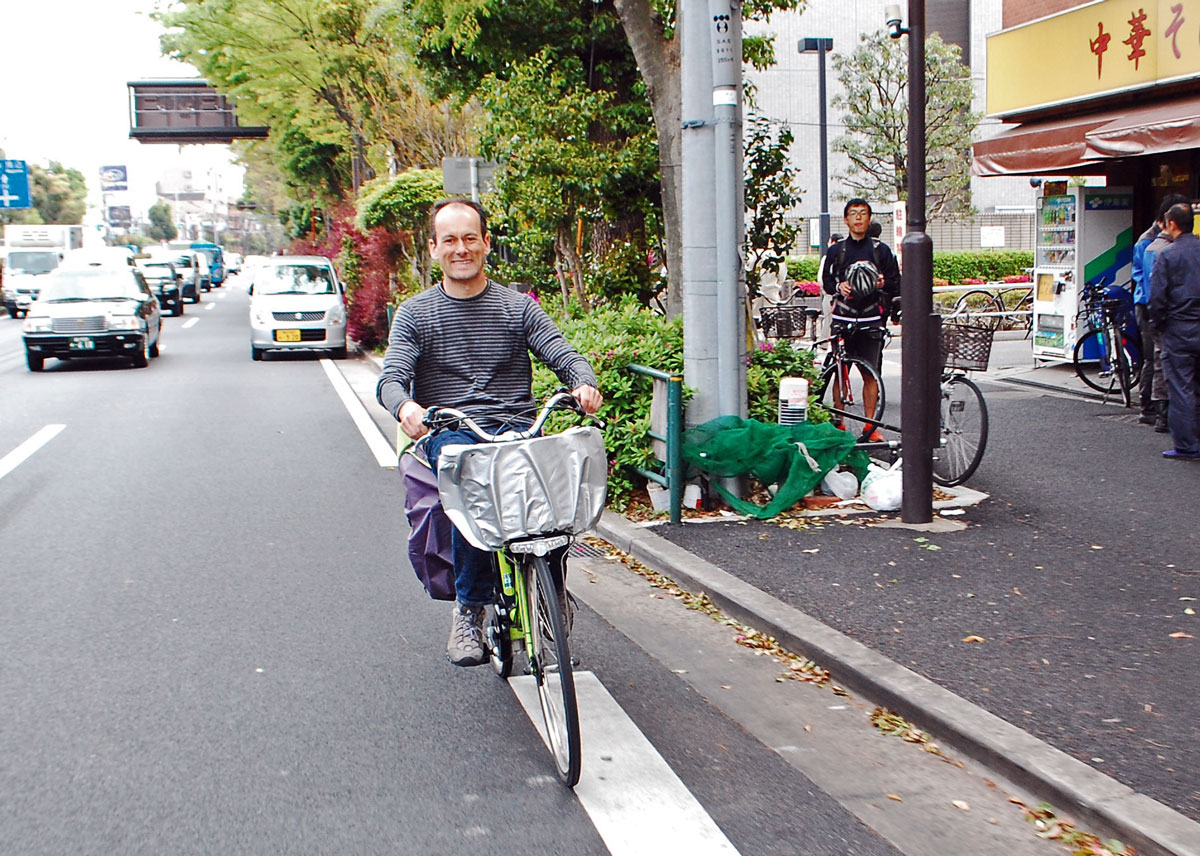
Then Koichiro told me that Japanese urban cyclists recently have won the right to ride in the streets, after having been banished to the sidewalks for decades. He was very proud of this fact. I wonder how much e-bikes contributed, because they really are too fast to ride on the sidewalk.
Then it dawned on me: E-bikes democratize speed. Anybody now can ride at speeds that before could be attained only by well-trained cyclists on performance bikes. That made me think that our infrastructure planners still are designing facilities for the last century. Most of the trendy cyclepaths are suitable for speeds of up to 15 km/h (9 mph), yet modern e-bikes go much faster. As your speed increases, the fear of getting hit from behind is reduced, whereas the dangers at intersections increase.
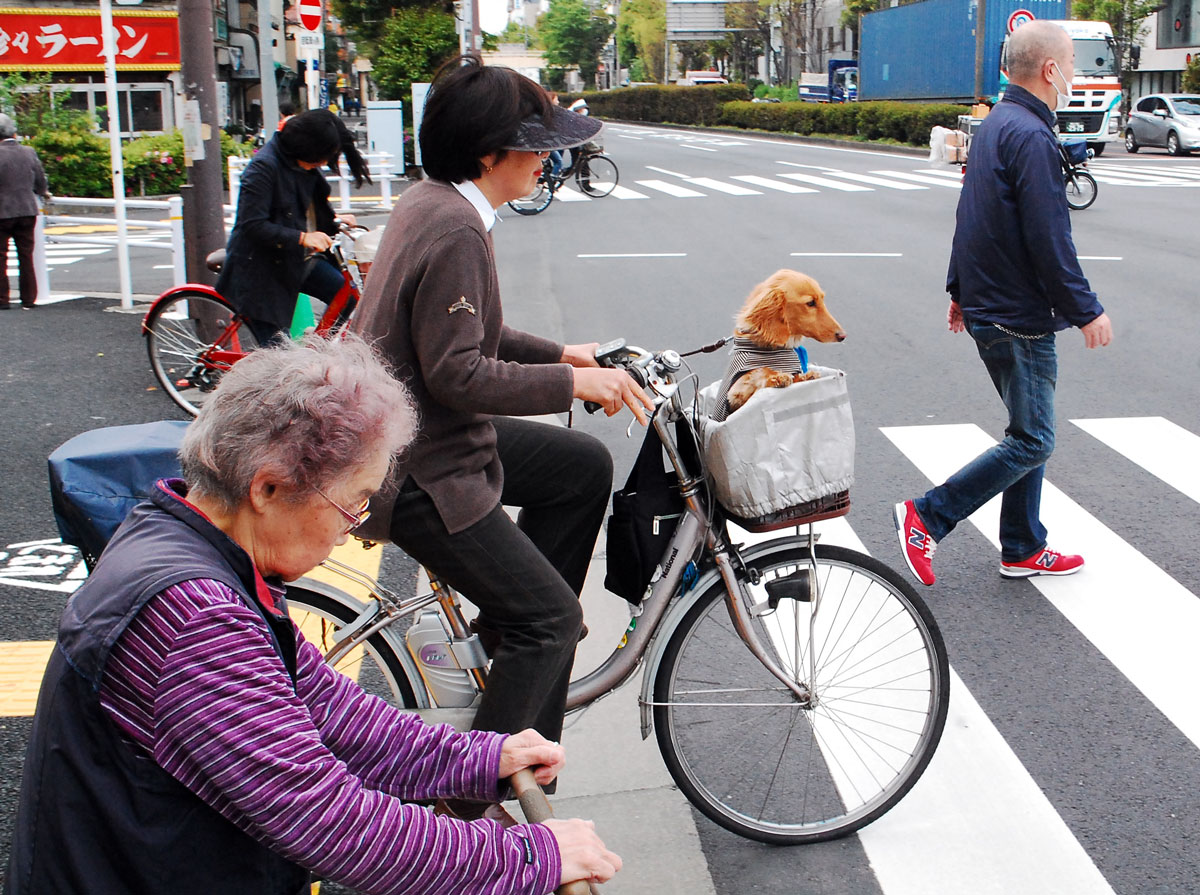
With e-bikes, we’ll soon have a new constituency who will demand a cycling infrastructure that can be used at reasonable speeds, which allows commuters to cover significant distances efficiently. It’s a constituency that cannot be so easily dismissed as “fast and fearless” (although that Tokyo lady who cut off Hahn might qualify), but one that has to be taken seriously.
Already, there is talk about re-designing bicycle facilities in the Netherlands to make them suitable for e-bikes. For avid cyclists, re-designing bicycle facilities to accommodate higher speeds and greater distances can only be a good thing. Let’s hope that North American urban planners don’t ignore this trend and spend countless millions on more infrastructure that soon will be unsafe and outdated.
Photo credits: Koichiro Nakamura


